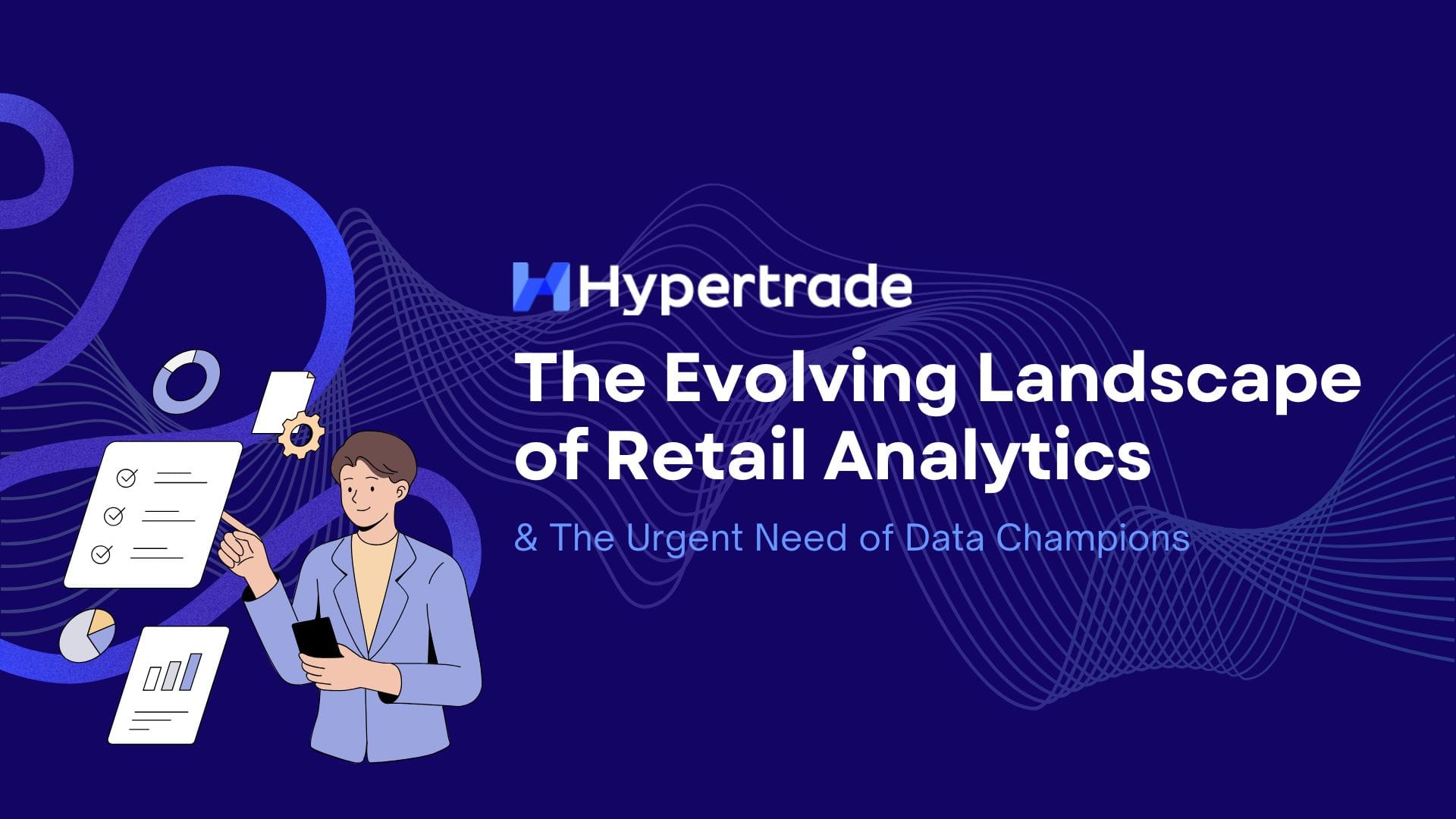In our previous piece, we explored the fascinating concept of category roles – how they shape the narrative of your store, both online and offline. We saw how assigning roles like “Destination”, “Traffic Driver”, or “Convenience” helps you curate a compelling customer experience. But the story doesn’t end there. It’s only the blank canvas. Now, let’s delve into the vital world of category tactics: the vibrant brushstrokes that bring that canvas to life.
Just like a storyboard guides a film, category tactics breathe life into your category roles. Each element of the retail mix – assortment, price, promotion, and space – becomes an actor with a carefully crafted script. These scripts, in the form of decisions and actions, determine how each category interacts with shoppers, fulfilling its intended role within the broader narrative.
From Sketch to Masterpiece: Unveiling the Power of Category Roles
Imagine stepping into your store, not just as a shopper, but as a captivated audience member. The products sing, the layout guides, and every element seems to tell a story. This is the magic of category roles: defining specific identities for each product category, like “Destination”, “Traffic Driver”, or “Convenience”, to shape an engaging, purposeful narrative.
Think of a bustling bakery as a “Destination” category. The aroma of fresh bread is the opening act, enticing customers deeper into the fragrant, oven-lit stage. Every shelf overflows with artisanal delights, tempting them to linger and explore. This curated variety, coupled with personalized recommendations and enticing displays, transforms the bakery into a must-visit experience, not just a place to pick up some bread.
Now, contrast this with a “Convenience” category, like grab-and-go snacks near the checkout. Here, conciseness is key. Streamlined shelves, strategically placed near impulse buys, and clear, no-fuss pricing guide customers to a quick decision. It’s not about lingering, but about seamlessly integrating into the broader purchase journey.
Business Case: Category roles are far more than aesthetic labels. They deliver tangible results:
- Increased customer engagement: A well-defined narrative keeps shoppers moving through the store, exploring and discovering new products.
- Boosted profitability: By aligning roles with customer needs, you maximize category efficiency and drive sales. A “Destination” bakery might entice additional purchases with complementary coffee and spreads, while a “Convenience” snack section optimizes checkout flow and impulse buys.
- Enhanced brand differentiation: Category roles help your store stand out from the competition by creating a unique and memorable experience.
The Scriptwriters: Decoding the Language of Assortment, Price, Promotion, and Space
Just like a film relies on a meticulously crafted script, category tactics orchestrate a captivating experience for your shoppers. Each element of the retail mix – assortment, price, promotion, and space – transforms into an actor with a precise script. Decisions about these elements become the lines they deliver, each carefully chosen to resonate with the category’s assigned role.
Assortment: Imagine a “Destination” wine section. Instead of generic bottles, it’s filled with curated selections based on region, occasion, or even food pairings. This deliberate variety becomes dialogue, sparking customer interest and inviting exploration. In contrast, a “Convenience” section for laundry detergent might have a limited, yet strategically chosen range, focusing on popular brands and clear size/price variations, like actors delivering short, informative lines to guide a quick decision.
Price: Price becomes the tone of voice, shaping perception and influencing behavior. A “Destination” category might leverage strategic price points to denote quality and exclusivity, while a “Convenience” category would focus on competitive pricing and clear value communication, and a “Traffic” might want to simplify shoppers’ choice by having a limited number of price points.
Promotion: Promotions become plot twists, injecting excitement and urgency. Targeted discounts or bundled offers in a “Destination” category can draw attention and encourage exploration, while limited-time deals in a “Convenience” section might drive impulse purchases.
Space: Shelf placement becomes stage direction, guiding customer attention and influencing behavior. A “Destination” category might be given prime real estate, bathed in spotlights and adorned with eye-catching displays, while a “Convenience” category might be strategically positioned near high-traffic areas for easy access.
Business Case: Mastering the language of the retail mix allows you to:
- Optimize inventory: By aligning assortment with customer needs, you reduce dead stock and maximize sales potential.
- Drive category profitability: Pricing and promotions become targeted tools to boost margins and attract desired customer segments.
- Enhance customer experience: Strategic space allocation improves navigation, simplifies decision-making, and encourages exploration.
Bridging the Performance Gap: The Unsung Hero of Category Tactics
Every great story needs a conflict, and in the world of retail, that conflict manifests as the category role gap. A deep dive into a category’s performance unveils the discrepancies between its aspirations and reality. Imagine a “Destination” clothing section with empty racks and uninspiring displays – a script falling flat due to missing actors. Or a “Convenience” section overloaded with confusing options, overwhelming the audience with unnecessary dialogue.
The gap assessment is the detective uncovering these plot holes. It analyzes sales data, customer feedback, and competitor practices to identify areas where the script needs reworking. Are shelves bare when they should be bursting with variety? Are prices misaligned with the desired value perception? Does the placement fail to entice exploration? Addressing these gaps is the key to rewriting the category’s story for success.
Business Case: Data analyses will lead you to:
- Increased Sales and Profitability: By identifying and addressing discrepancies between the desired category role and its actual performance, you can optimize inventory, pricing, and promotions, leading to improved sales and higher category profitability.
- Enhanced Customer Experience: Addressing gaps in assortment, value perception, and product presentation ensures that the category delivers on its promised role, whether it’s providing exciting variety, convenient options, or a destination experience. This translates to a more satisfying and engaging customer journey, boosting loyalty and repeat visits.
- Reduced Operational Costs: Identifying and eliminating inefficiencies and inconsistencies in category management, such as dead stock or misalignment with customer needs, leads to streamlined processes and optimized resource allocation, resulting in cost savings across the operation.
- Data-Driven Decision Making: The gap assessment provides valuable data and insights into customer preferences, category performance, and market trends. This data empowers you to make informed decisions about assortment, pricing, promotions, and space allocation, leading to more effective category strategies.
- Competitive Advantage: By actively managing and optimizing your category roles, you can differentiate yourself from the competition by offering a unique and compelling shopping experience tailored to specific customer needs. This can attract new customers and retain existing ones, giving you a competitive edge.
From Vision to Execution: The Granular Power of the Category Activity Plan
A masterfully scripted play thrives on a well-structured act structure. Just like that, category tactics flourish through the category activity plan: the granular roadmap that translates yearly visions into quarterly chapters and meticulous monthly scenes. This blueprint ensures every interaction, from a strategic end-of-season sale to a personalized product recommendation, reinforces the category’s role within the grand narrative.
Imagine a “Destination” furniture section. The yearly vision might be to establish it as the go-to place for premium home furnishings. The quarterly chapter could focus on launching curated collections for different room styles. Then, the monthly scene might involve a promotional event for one specific collection, complete with targeted marketing campaigns and in-store displays. This granular planning guarantees consistent messaging and cohesive execution, leaving no room for plot inconsistencies.
Business Case: The category activity plan delivers:
- Improved operational efficiency: By breaking down goals into smaller, actionable steps, you streamline internal processes and resource allocation.
- Enhanced agility: The plan allows for flexible adjustments based on market trends and customer feedback, ensuring your narrative remains relevant and engaging.
- Data-driven decision-making: Regular monitoring and analysis of each stage in the plan provide valuable insights to optimize future strategies.
Collaboration Takes Center Stage: Bringing Internal Teams and Suppliers into the Spotlight
But no actor shines alone. The magic of category tactics unfolds through seamless collaboration. Assigning defined objectives to each retail mix element – a targeted price drop igniting a sense of urgency, a strategically curated display sparking discovery – provides clear direction for internal teams. Supply chain, marketing, and operations become the supporting cast, their alignment, support, and feedback forming the bedrock of successful execution.
Picture a “Convenience” snack section. While the category manager and buyer define the assortment, the marketing team creates eye-catching displays and signage. Supply chain ensures timely product availability, and the operations team coordinates checkout flow for seamless purchases. This orchestrated performance ensures the “Convenience” narrative resonates with every customer touchpoint.
Business Case: Collaborative category tactics bring:
- Synergy and shared ownership: When teams work together towards a common goal, motivation and engagement soar, leading to more innovative solutions.
- Improved communication and alignment: Regular collaboration breaks down silos between departments, fostering a unified approach to category management.
- Leveraged expertise: Each team brings their unique skills and knowledge to the table, maximizing the effectiveness of category tactics.
Beyond the Curtain: Embracing Transparency and Unleashing the Power of Supplier Partnerships
But the stage extends beyond the four walls of your retail space. Suppliers are crucial characters in this dynamic play. By sharing not just sales figures but the invaluable insights gleaned from the gap assessment, you empower them to become strategic partners. This transparency, embodied in the Supplier Business Review, invites their expertise and resources to the table, boosting the overall performance of your category story.
Think of a “Destination” wine category. Sharing data on customer preferences and sales trends with your winemakers can inspire them to develop new varietals or curate special blends tailored to your audience. This collaborative approach elevates the category experience, offering unique products and exceeding customer expectations.
Business Case: Supplier partnerships unlock:
- Enhanced product assortment and innovation: Suppliers can tailor their offerings to your specific needs and customer preferences, leading to a more relevant and exciting variety.
- Improved supply chain efficiency: Transparent data sharing fosters better inventory management and reduces stockouts, ensuring a smoother customer experience.
- Cost optimization: Collaborative planning can lead to mutually beneficial agreements with suppliers, optimizing pricing and promotions.
Remember, category tactics are a journey, not a destination. Embrace the iterative process, refine your scripts, and celebrate the collaboration. As your teams and suppliers become immersed in the narrative, you’ll see your category roles come alive, enchanting your customers and propelling your business forward. So, take a bold step, pick up your brush, and paint your retail masterpiece with the vibrant strokes of category tactics. The spotlight awaits!
Related Resources
Category Management Setup: a Step-By-Step Guide for retail players of all sizes
How to Analyze a Category Performance
4 Tech Innovations for saving worked hours and win your Shoppers’ heart
From Hypertrade Retail Knowledge Base







